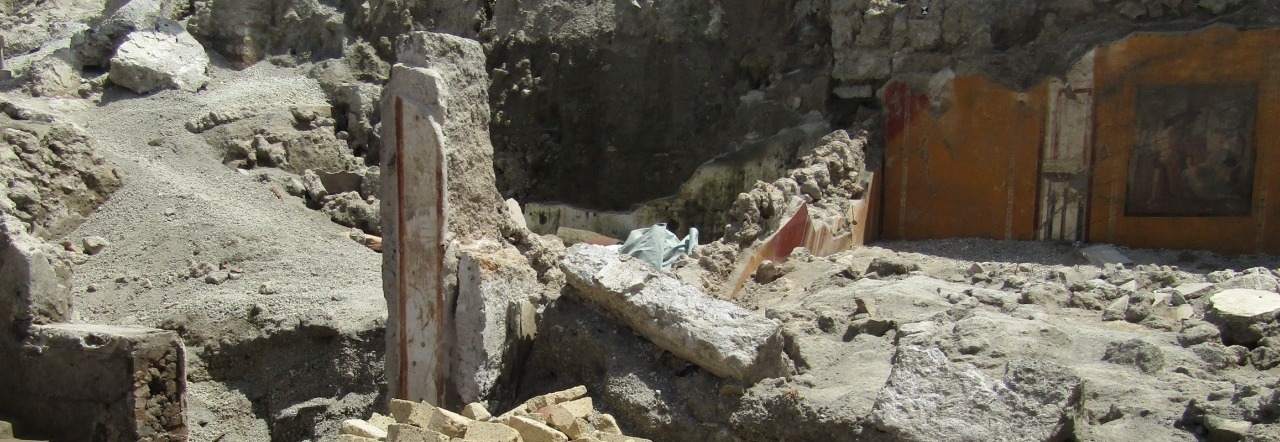New Insights from the Excavations at Pompeii's Archaeological Park

Monday 25 March 2024, 09:55 - Last updated :
16:30
4 Minutes of Reading
New data on Roman construction emerges from the ongoing excavations at the Pompeii Archaeological Park. In the environments of ancient domus that the archaeological dig is bringing to light in Regio IX, insula 10, important evidence of a fully active construction site has reemerged: work tools, tiles, and tufa bricks stacked up, and heaps of lime. "Pompeii is a treasure chest and not everything has been revealed in its full beauty. Much material still needs to emerge. In the last Budget Law, we financed new excavations throughout Italy and an important part of this allocation is destined precisely for Pompeii," declares the Minister of Culture, Gennaro Sangiuliano - "I was very pleased when the director of the Archaeological Park, Gabriel Zuchtriegel, mentioned that, never like at this moment, so many excavations are active on the site: we can say that it is a record of the last decades. At the same time, we are also working on other fronts. In recent months the Minister of Defense, Guido Crosetto, has transferred to the Ministry of Culture the Spolettificio of Torre Annunziata, where a large museum will be created to collect all these findings." The open construction site According to scholars, the construction site was active until the day of the eruption of Vesuvius in 79 AD, which began around lunchtime and lasted until the morning of the following day. The excavation in the area in question, aimed at regulating the hydrogeological layout along the border between the excavated and unexcavated part of the Roman city, is attesting to the presence of an ancient construction site that affected the entire block. Particularly numerous are the evidences of the works in progress in the house with the bakery of Rustio Vero, where a still life with the depiction of a focaccia and a glass of wine was already documented in recent months. The atrium was partially uncovered, on the ground were stacked materials for renovation and on a door of the tablinum (reception room), decorated in Pompeian Fourth Style with a mythological painting of Achilles at Scyros, are still readable today what were probably the construction site's accounts, that is, Roman numerals written in charcoal, easily erasable unlike graffiti engraved in the plaster. The amphoras of the lararium Traces of the ongoing activities are also found in the environment that housed the lararium, where amphoras reused to extinguish the lime used in the application of plasters were found. In several rooms of the house, construction tools were discovered, from the lead weight to lift a perfectly vertical wall (plumb) to the iron hoes used for the preparation of mortar and for the processing of lime. Also in the neighboring house, accessible through an internal door, and in a large mansion behind the two houses, so far only partially investigated, numerous testimonies of a large construction site were found, also attested by the huge piles of stones to be used in the reconstruction of walls and by amphoras, ceramics, and tiles collected to be transformed into cocciopesto. The partnership with the USA This is an extraordinary opportunity to experiment with the potential of a close collaboration between archaeologists and materials scientists, write the authors of an article published in the E-Journal of the Excavations of Pompeii. In the analysis of materials and construction techniques, the Pompeii Archaeological Park has availed itself of the support of a group of experts from the Massachusetts Institute of Technology, USA. "The hypothesis put forward by the team is that of hot mixing, that is, mixing at high temperatures, where quicklime (and not slaked lime) is pre-mixed with pozzolana dry and subsequently hydrated and applied in the construction of the opus caementicium," reads the text. Normally, quicklime is immersed in water, that is, slaked, well before its use on site, forming the so-called lime putty, a material of plastic consistency. The slaking, that is, the reaction between quicklime and water, produces heat. Only at the time of application, the lime is then mixed with sand and aggregates to produce mortar or cementitious material. In the case of the Pompeii construction site, however, it turns out that quicklime, that is, not yet brought into contact with water, was initially mixed only with pozzolanic sand. While contact with water occurred shortly before the wall was laid. This means that, during the construction of the wall, the mixture of lime, pozzolanic sand, and stones was still hot due to the ongoing thermal reaction and consequently dried more quickly, shortening the completion times of the entire construction. Differently when it came to plastering the walls, it seems that the lime was first slaked and subsequently mixed with aggregates to be then spread, as is still done today.
© ALL RIGHTS RESERVED
This article is automatically translated
This article is automatically translated
